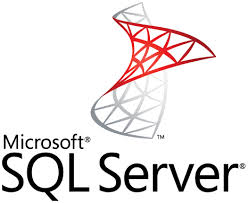Thanks to the innovative patterns developed in Sentinet3, it is possible to monitor at the same time hundreds of parameters for more complex servers with a simple click.
In this article we will show you what you can do on Microsoft SQL server.
Microsoft SQL Server is an enterprise database solution most commonly used on the Windows platform.
“Sentinet3 SQL-Server Pattern” allows DBA to monitor the performance and availability of the production database providing an ideal starting point for troubleshooting. Sentinet3 through this Pattern is able to connect to the database source and monitor the different values of the columns in the system tables, collect data, etc, and also to communicate through alarms, if the properties of the database system are over a certain threshold level.
Sentinet3 also has the ability to be able to monitor any event that is reported in the SQL Server event log of Windows servers. This feature, combined with the ability to monitor the SQL configuration, allows administrators to control the specific problems before they become unmanageable, perform impact analysis, and monitor closely the behavior of the parameters of a SQL Server.
Among the various aspects that the Pattern is able to control on a SQL Server we find:
- Reachability of the machine
- CPU usage
- MEM usage
- Disk space
Sentinet3 goes to the "heart" of the system providing a complete MSSQL monitoring by running the following controls
- Buffer Cache Hit Ratio checks the percentage of the pages found in the buffer pool of a SQL Server without having to resort to a reading from the disk
- Page Lookups Per Second Indicates the number of requests per second to search for a page in the buffer pool
- Free Pages (Cumulative) checks the number of available pages
- Total Pages (Cumulative) checks the total number of pages in the buffer pool (includes database and stolen page)
- Target Pages checks the number of pages in the buffer pool
- Database Pages checks the number of pages of content in the database buffer pool
- Stolen Pages checks the number of pages used for different purposes (including procedure cache)
- Lazy Writes / Sec checks the number of buffers written per second from Lazywriter Buffer Manager
- Readahead Pages / Sec checks the number of pages read per second before being used
- Page Reads / Sec checks the number of physical reads of database pages executed per second
- Checkpoint Pages / Sec checks the number of pages flushed to disk per second
- Page Writes / Sec checks the number of physical writes to the database pages executed per second
- Lock Requests / Sec checks the number of new locks and lock conversions per second requested by the Block Manager
- Lock Timeouts / Sec checks the number of lock requests per second for which a timeout has occurred, including internal requests for NOWAIT locks
- Deadlocks / Sec checks the number of lock requests per second that resulted in a deadlock
- Lockwaits / Sec checks the number of lock requests per second that require a waiting period the caller
- Lock Wait Average Time (ms) checks the average waiting time (in milliseconds) for each lock request that resulted in a waiting period
- Page Life Expectancy checks the number of seconds during which a page is maintained in the buffer pool without references
- Page Splits / Sec checks the number of page splits per second performed in the result of overflowing index pages
- Full Scans / Sec checks the number of unrestricted full scans per second
- Time to connect to the database checks the time of connection to the DB









